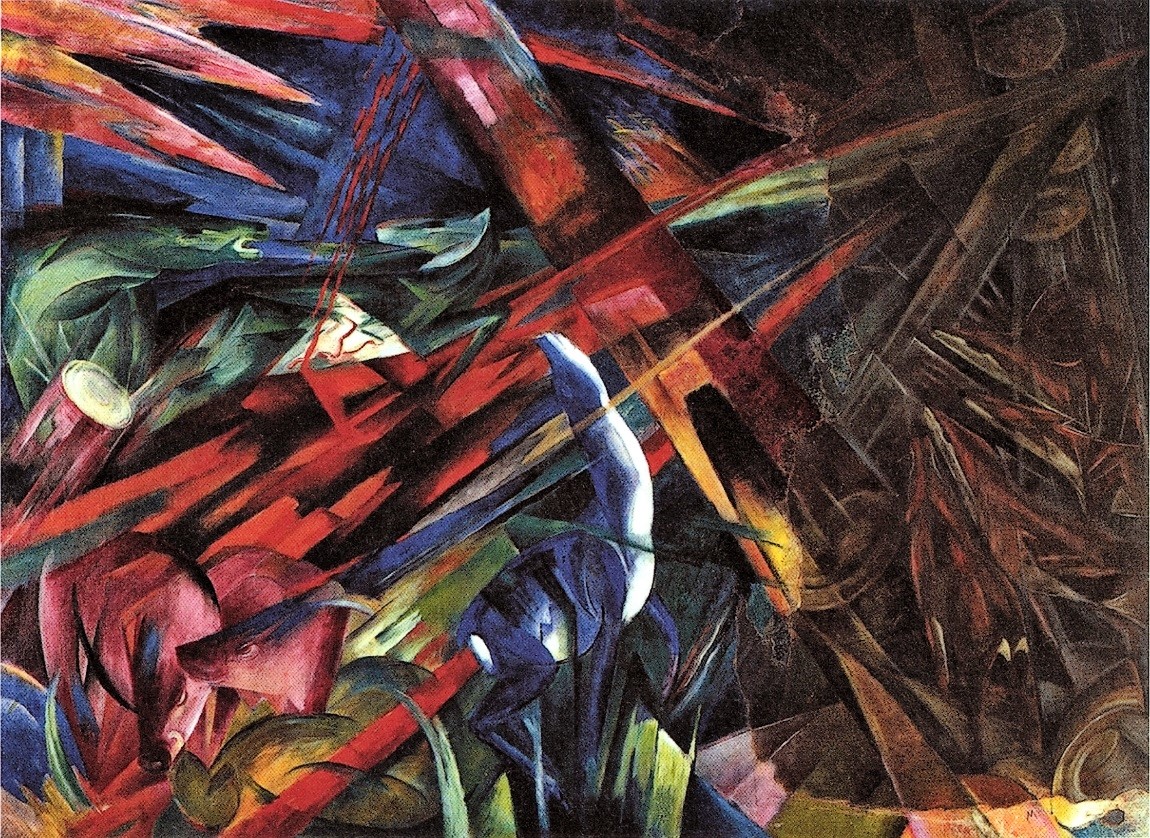Modernism/Primitivism: Three Quotes/A Painting
The scapegoat by means of which the accumulated ills of a whole year are publicly expelled is sometimes an animal. For example, among the Garos of Assam, “besides the sacrifices for individual cases of illness, there are certain ceremonies which are observed once a year by a whole community or village, and are intended to safeguard its members from dangers of the forest, and from sickness and mishap during the coming twelve months. The principal of these is the Asongtata ceremony. Close to the outskirts of every big village a number of stones may be noticed stuck into the ground, apparently without order or method. These are known by the name of asong, and on them is offered the sacrifice which the Asongtata demands. The sacrifice of a goat takes place, and a month later, that of a langur (Entellus monkey) or a bamboo-rat is considered necessary. The animal chosen has a rope fastened round its neck and is led by two men, one on each side of it, to every house in the village. It is taken inside each house in turn, the assembled villagers, meanwhile, beating the walls from the outside, to frighten and drive out any evil spirits which may have taken up their residence within. The round of the village having been made in this manner, the monkey or rat is led to the outskirts of the village, killed by a blow of a dao, which disembowels it, and then crucified on bamboos set up in the ground. Round the crucified animal long, sharp bamboo stakes are placed, which form chevaux de frise round about it. These commemorate the days when such defences surrounded the villages on all sides to keep off human enemies, and they are now a symbol to ward off sickness and dangers to life from the wild animals of the forest. The langur required for the purpose is hunted down some days before, but should it be found impossible to catch one, a brown monkey may take its place; a hulock may not be used.” Here the crucified ape or rat is the public scapegoat, which by its vicarious sufferings and death relieves the people from all sickness and mishap in the coming year.
Sir James George Frazer, The Golden Bough: A Study in Magic and Religion, Macmillan, New York, 1922, Ch. 57, "Public Scapegoats", §3, "The Periodic Expulsion of Evils in a Material Vehicle". Via William Gaddis, The Recognitions, Harcourt, Brace and Company, New York, 1955, p. 49.
The method revealed expected preferences in tamarins for soft over loud white noise, and for positive-over negatively valenced conspecific vocalizations, suggesting its appropriateness as a measure of preference. When subsequently tested for other acoustic preferences found in humans, however, tamarins were indifferent. Specifically, tamarins failed to demonstrate a preference for consonant over dissonant musical intervals. In contrast, human adults showed the expected preference for consonance when measured with an analogous method.
Josh McDermott and Marc D. Hauser, "Nonhuman primates prefer slow tempos but dislike music overall", in Cognition, Vol. 104, No. 3, September 2007, pp. 654-668, at p. 655.
His [Alban Berg's] music is without force, tangible and fatal like a wine; that comprises its true modernity, modernity of a kind that finds a genuine counterpoint only in the properties of some exuberantly abstract creations of contemporary art and sculpture with a profound predisposition for the chaotic.
Theodor Adorno, Alban Berg, Juliane Brand and Chris Hailey (Trans), Cambridge University Press, Cambridge, 1991, p. 29.
 Franz Marc, The Fate of The Animals, 1913.
Franz Marc, The Fate of The Animals, 1913.